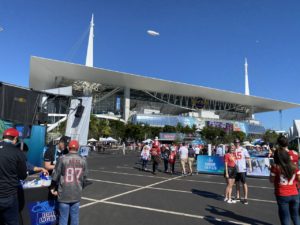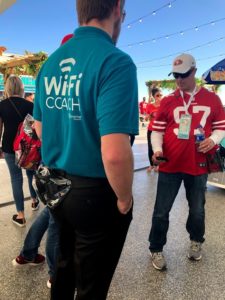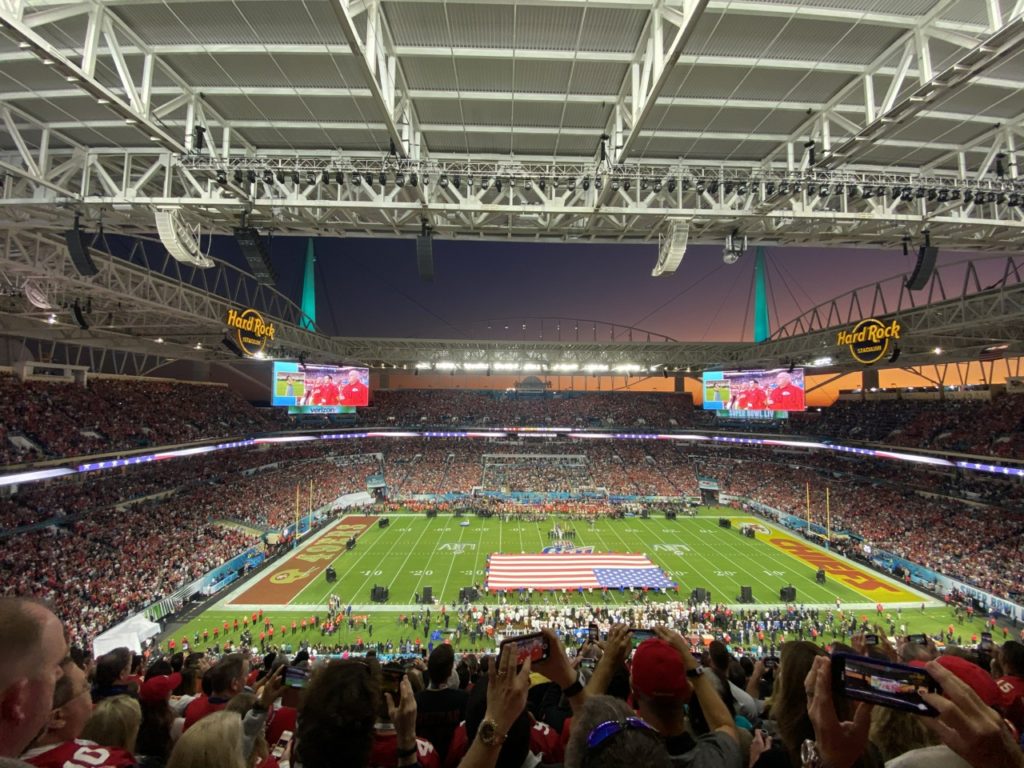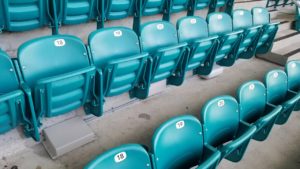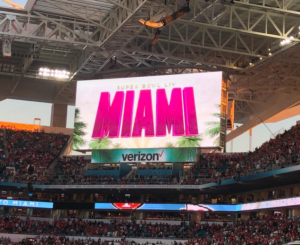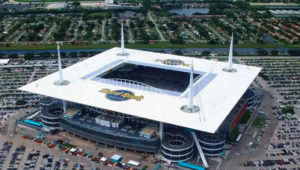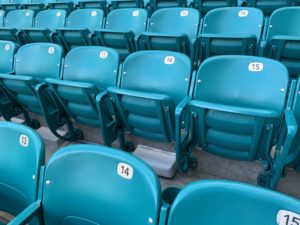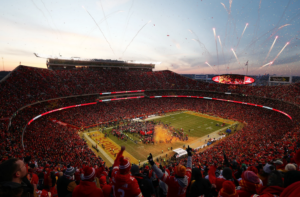
Arrowhead Stadium after the Chiefs’ win over the Tennessee Titans in the AFC Championship game. Credit: Sam Lutz/Kansas City Chiefs
While the Chiefs’ statement did not announce a number, the Ravens’ announcement did say that if fans were allowed in M&T Bank Stadium this season during the coronavirus pandemic, the total permitted would be “fewer than 14,000 seats per game” in order to meet specifications laid out by “the social distancing guidelines and fan safety protocols developed by health experts, governmental officials and the NFL,” the team said.
While the Chiefs did not set a baseline number, the team said it would not be able to have Arrowhead Stadium filled to capacity.
“People around the country and around the world are getting accustomed to a constantly changing environment and the same goes for all of us in Chiefs Kingdom,” Chiefs President Mark Donovan said in a prepared statement. “While our goal all offseason was to have a full stadium as we begin our Super Bowl title defense, it is out of consideration of the health and safety of our fans, employees, coaches and players that we move forward with a reduced-capacity plan that adheres to local guidelines and expert recommendations.”
Both teams outlined plans to accomodate fans who have already purchased tickets or season tickets for the upcoming season, with various credits and refund options depending on what the fans decide to do. For example, both teams are offering 2020 season ticket payments to be credited to the 2021 season, among other options.
Earlier this year, the Miami Dolphins publicly shared plans to open Hard Rock Stadium to NFL fans with a limited capacity of approximately 15,000.
